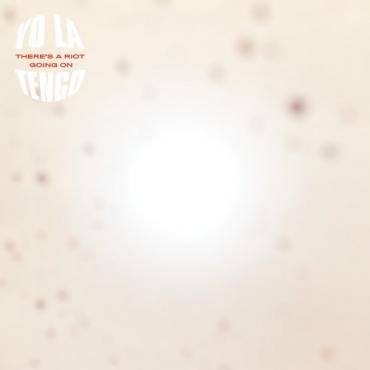Yo La Tengo’s Radiant Escapism

Yo La Tengo has always given us songs we can listen to when we need to escape for a while and decompress. The soothing, hushed sounds of Ira Kaplan and Georgia Hubley’s vocals is so delicate, it’s like they’re holding us in a gentle embrace, comforting us. On their latest record (the band’s 15th) they borrow the title of Sly and the Family Stone’s iconic 1971 album There’s a Riot Goin’ On, a nod to protest music as a cure for the soul in dark times. Yo La Tengo’s There’s a Riot Going On is made up of 15 tracks that were created spontaneously over a long period of time in their studio, with the recorder just running in the background, waiting to capture whatever came out naturally. The result is a dreamy, cohesive statement album that finds a shining light in a murky world. Even the album’s cover displays a hazy, but bright light through a speckled, dirty window, like something trying to lure you outside and out of a funk.
Though it uses the name, Yo La Tengo’s record is a far cry from Sly’s. It’s billowy and shimmering, rather than explosive and soulful. It has the sound of a recluse, searching for something to smile about when everything in the outside world has gone to shit. The theme of needing to get away, whether to somewhere better or just to the safety of our own homes, runs through these songs. On the melodic “Shades of Blue,” Hubley sings “painting my room to reflect my mood … staring at walls when I’m feeling down.” This is one of the record’s standouts, a rare upbeat entry that seems to hint at Sly’s “Everyday People” with its bouncy arrangement. “Polynesia #1” builds a soft, soothing world to which we can run when we’re just tired of it all and need a break. It’s followed by the mostly instrumental track “Dream Dream Away,” which sounds like a continuation of the sun-drenched Polynesian retreat with its leisurely pace and chilled out guitars.
And while lyrics about anxiety, feeling trapped, and needing to shut yourself out permeate the album, it is often the lengthy, wordless jams that capture this feeling most poignantly. “Shortwave” is an instrumental track halfway through the record that is meditative and moody. “Above the Sound” features Kaplan practically whispering about self-reflection amidst chaos, But James McNew’s creeping bassline combined with smoky, warm horns and almost tribal-sounding percussion create that sense of hushed insanity so well on their own. With songs like this luring us toward some place better and brighter, we cannot deny the temptation to follow.



